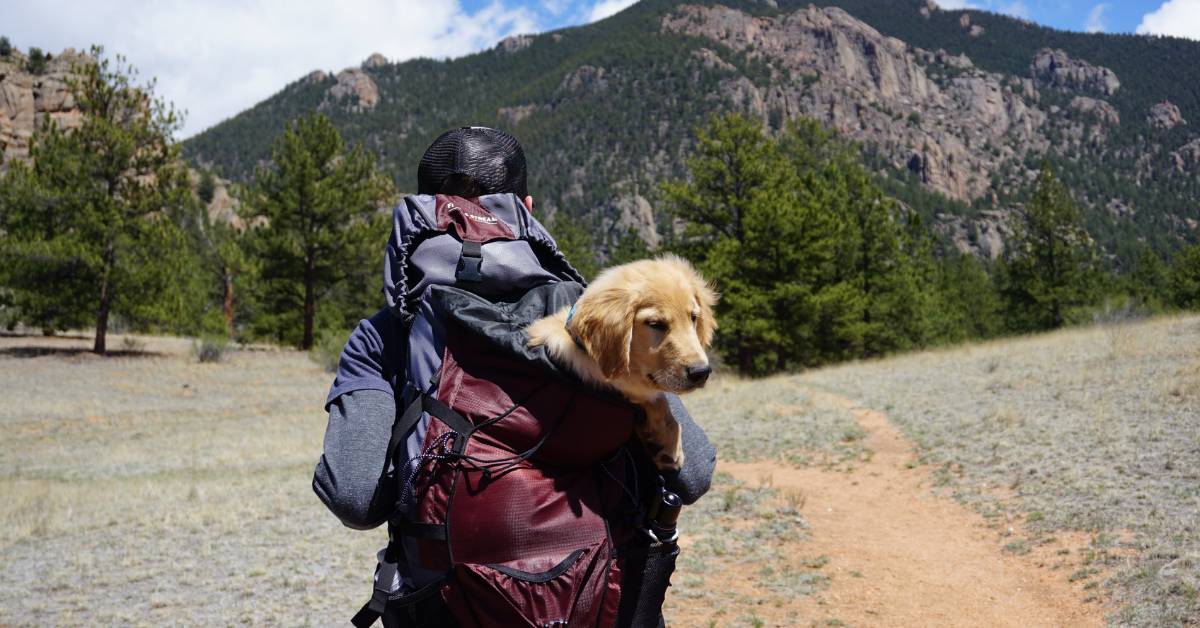
Walking and Hiking with Your Pet
Walking and hiking with your pet can be a great form of exercise and socialization for you and your dog. Many people decide to get a dog so they will have a walking or hiking buddy; it can be a great incentive for getting out and enjoying some fresh air. It can also be a great socialization tool for both you and your dog. Your dog gets used to meeting new people and other dogs and you will most likely make some new acquaintances yourself. Dogs are great icebreakers! Often people are more likely to approach someone who has a dog with them. However, there are some things to consider before beginning a walking or hiking routine with your dog.
When walking your dog within city limits, be sure to adhere to the leash laws. Most communities require that dogs be kept on a leash at all times. Speaking of leashes, if your dog does not walk properly on a leash, walking with them can be an unpleasant experience. You should walk your dog; your dog should not walk you. If you are unable to control your dog on a leash, don’t let this keep you from walking them. Consult with a trainer for leash training. Your dog should always wear a collar with a tag that has your contact information. You never know when your dog may get away from you. You should always carry plastic bags to pick up your dog’s waste. When encountering another person or dog, do not allow your dog to approach without first asking if it is okay.
If your dog is not used to getting a lot of exercise, start out slow when beginning a walking regimen. When out walking, as soon as you see your dog showing signs of fatigue, allow them to rest, then head back home. Always carry water for both you and your dog. In hot weather, you should time your walks for the coolest parts of the day. In cold weather, you may want to buy a coat or sweater for your shorthaired dog. Be careful of walking on sidewalks where people have used rock salt to melt the ice. If your dog walks through this, it can burn the pads of their feet.
If you plan to do strenuous hikes with your dog, it is very important to make sure both of you are in proper condition for it. Start out by doing short, easy hikes with your dog and gradually increase the distance and difficulty of the hike. If you have any doubt whether you or your dog are in physical shape for hiking, consult your doctor and veterinarian. Know the area that you will be hiking in and be prepared. If you plan to hike in an area with sharp rocks, you may want to have something to put on your dog’s feet for protection. Familiarize yourself with the types of plants and animals found where you plan to hike.
If there are rattlesnakes in the area, be extremely cautious, especially if your dog is off-leash. If allowing your dog to run off-leash, they should be very familiar with the “come” and “leave it” commands. If they encounter a rattlesnake or something else that might pose a danger, give them the “leave it” command and remove them from the area. If you live or hike in areas with many rattlesnakes, consider having your pet vaccinated against rattlesnake venom. For more information on rattlesnake venom and the types of snakes it protects from, visit the manufacturer’s website, Red Rock Biologics (http://www.redrockbiologics.com/index.html). Note: if rattlesnakes are a problem in your area, speak with your vet about training classes on rattlesnake avoidance for you and your pet. It could save both of your lives.
In many popular hiking areas, there are a number of plants dangerous to you and your pet. Poison Oak, Poison Ivy, Poison Sumac and cacti can all cause skin irritation and allergic reactions in you and your dog. You and your pet can both be affected by direct contact and by secondary contact (you catching it from your dog after they get it on themselves and vice versa). Before beginning any hike, familiarize yourself with the different types of plants and their potential dangers depending on the plant’s cycle. Many visitor centers will have information available on site or as handouts.
Always carry a first-aid kit for yourself and your dog, which includes diphenhydramine (antihistamine). Consult your vet or local hiking clubs for appropriate contents. Some hiking clubs may sell their own first aid kits as a fundraising resource. Of course, always carry plenty of water.
For information on canine friendly hiking trails in the US and Canada, visit http://www.hikewithyourdog.com/. Now get out there and get some fresh air!






